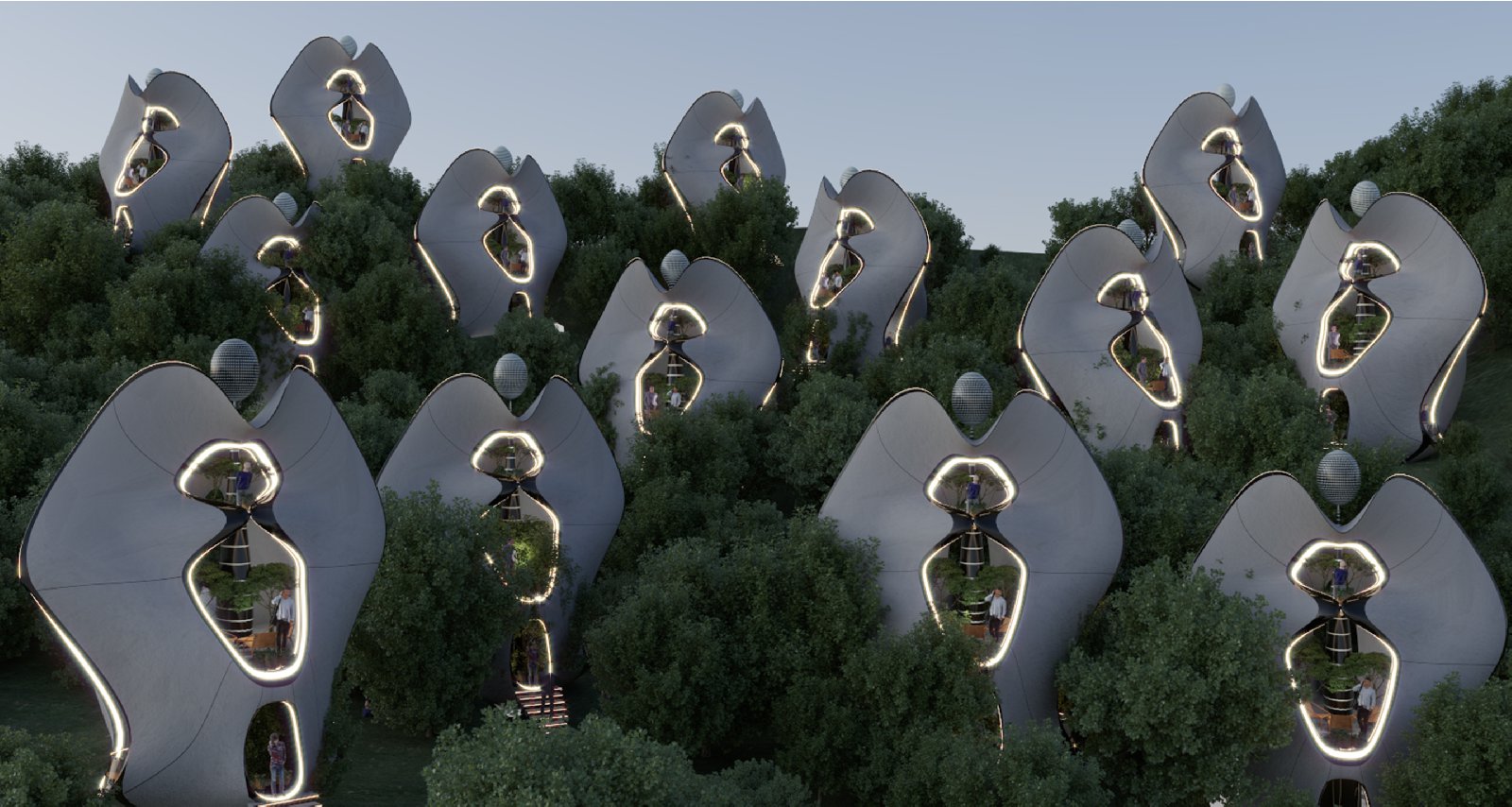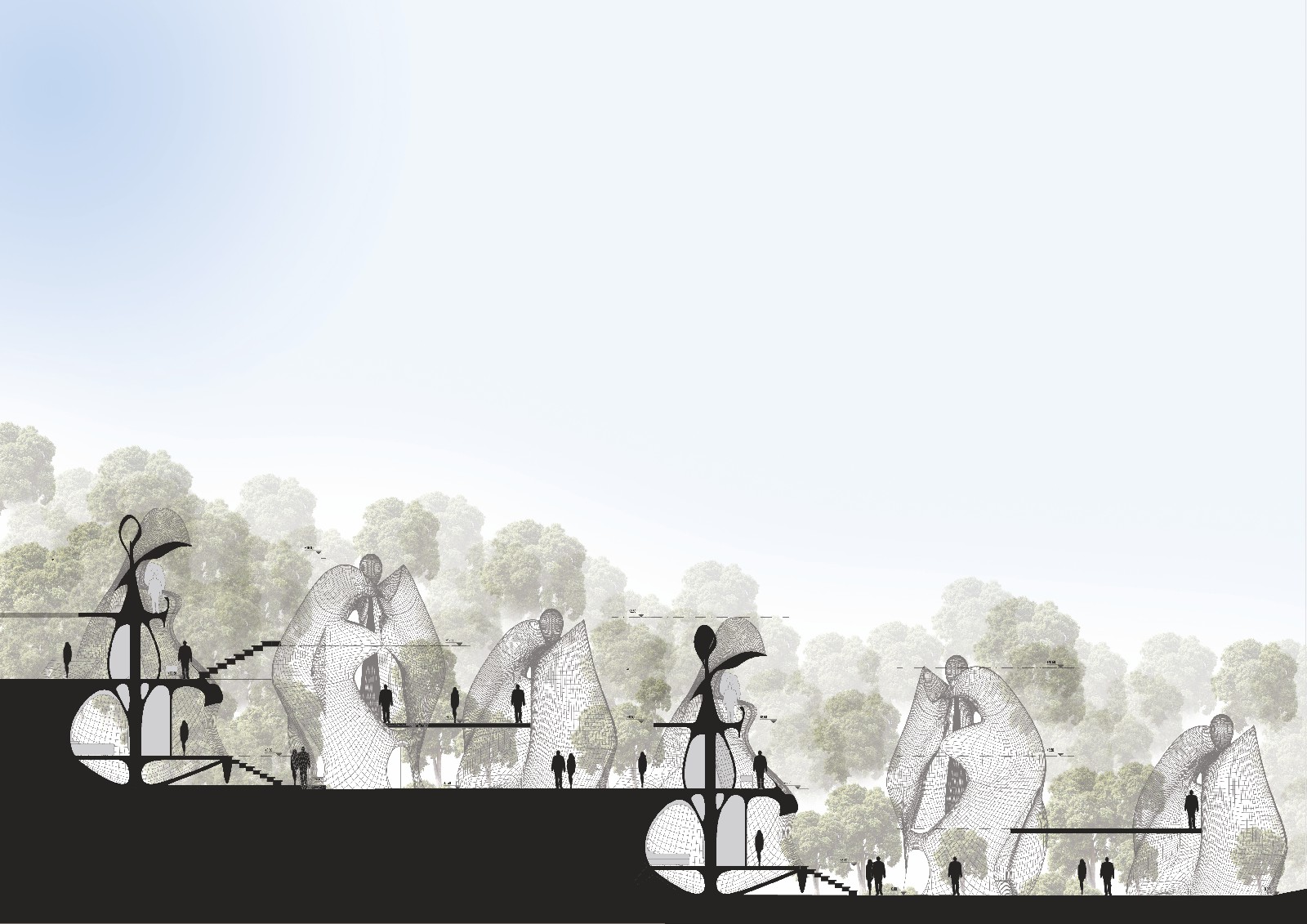MASK Architects has designed the world’s first steel 3D printed structure of modular houses for Nivola Museum’s visitors,Tourists and Artists in Orani, city of Sardinia. Öznur Pınar Çer and Danilo Petta have Inspired from the work of “Costantino Nivola”, they have designed “Exosteel Mother Nature” modular houses which they have taken inspiration from him sculpture called the “La Madre”.
The project use a steel 3D-printed “exoskeleton” construction system that supports and distributes all the functional elements of the building, using their new solution of construction technique which they called “EXOSTEEL”. The house is composed firstly by a hollow central column inserted for one / third of its length into the ground and by various organic branches that support the three floors of the building. On each floor a perimeter frame divides and supports the facades made up of panels modeled to follow the organic shape of the house.
General Report
“Madre Natura ” or known as “Mother Nature” will be the name given to this project and development. The heart of the Earth and all its nature is known as mother. Like a mother, we want to raise up this development and embrace it, to give credit to the pivotal point where the woman has influenced the world. We have tried to harmonize the two different concepts of Nature and Mama in this project for Orani. Highlighting the importance of how Nivola influenced through his work for the community and in the art’s role within civic life.
Taking all this into mind we have taken the same understanding of how our development should be accessible to everyone and how art plays a role in bringing communities together. We want our modules to be able to open up and bring communities together as well as to be able to create some kind of artistic influence throughout the design. We want Orani City to become an iconic landmark in which it can be admired from a distance as well as within the city by all as viewing art and landmarks. “Madre Natura” is a sustainable development of modular system style development in natural settings. Inspired by the work of “Costantino Nivola”, we have taken inspiration from the” La Madre” Sculpture.
Situated near the Nivola Museum zone, we have taken the whole area into account while designing our project. Our development is designed in a way to become a “living landmark”, in connection with the local heritage. This iconic project will be a new addition to the Orani social, exhibition and living areas. The design will be an iconic identity as livable and sociable art pieces and architectural structures that will develop a new identity of the city. A combination of livable space and sociable space will be distributed to the different levels of the terrain injunction with the different levels of the modules.
The site that we have situated our development on is a sloppy mountain side that will be transformed into staggered sections that will provide different levels for the modules to be situated in. Surrounded by natural scenery, we want our development to be self-sustainable working in harmony with nature. Sardinia is known to have winds and sometimes it can be very strong, due to the winds, we have had to manage our modules and design them in a way to allow wind to pass through. We have created voids either side where the wind can pass through. It also allows us to create openness throughout the modules to make sense of feeling together with nature.
Each building which is “self sustainable” can also provide energy resources to the grid of the development. Each building is centered with a ‘Energy Tower’ that will provide all natural generated energy from Solar and Wind. The Energy Tower is covered with solar panels that will harvest solar energy while the top of the centered energy tower itself will rotate 360 degrees at the same time with the wind that will also generate wind turbine energy. Throughout the lower part of the centered tower, we have housing for all the technical equipment of the module that houses all necessary storage for water and energy as well as distribution stations for the surroundings.
We have taken a bold step and not included stairs, rather we encourage the inhabitants and visitors to use natural staircases and the natural inclination of the terrain and environment. The two different floors A1 and B1 will have different purposes. The modules are expandable, flexible and adaptable in any situation. The ground floor ‘A1’ will only be designed for accommodation. The floor which is 1.5 meters high from the ground, will contain a working area, a private showerarea and also storage. The ceiling which is 3.5 meters high will give a much open area feeling while the interior will be designed to be organic and natural.
‘B1 Social Floor’ will be a unique addition to the modules. All B1 floors (B1/B2/B3/B4) will be used for social spaces or can be adapted to the needs of visitors or inhabitants. It can be also used as additional accommodation space in which more bedroom areas can be added for the module. While this can be the case, we focus more on the social aspect of the community in which three modules can be connected on B1 floor level to create a much larger social area for larger events. The ‘C1 Panoramic Level’ will be a viewing station to see the breathtaking scenery and the surroundings.
This C1 level can also be opened up to join with the other modules and their C1 and B1/2/3/4 levels to create a bigger Panoramic level depending again on the need for the habitats or visitors and events. The main centered energy tower that houses all the systems is constructed out of a steel skeleton. We were able to create the distinctive exterior structure of the carcass due to this metal skeleton. The main exterior material is Effix-Based composite light grey panels, which provide a combination of comfortable isolation of the space and combining the white-stone aesthetic feeling like the “Madre Sculpture.” Source by MASK Architects.
- Location: Orani, Italy
- Architect: MASK Architects
- Lead Architect: Öznur Pınar Çer and Danilo Petta
- Year: 2021
- Images: Courtesy of MASK Architects









